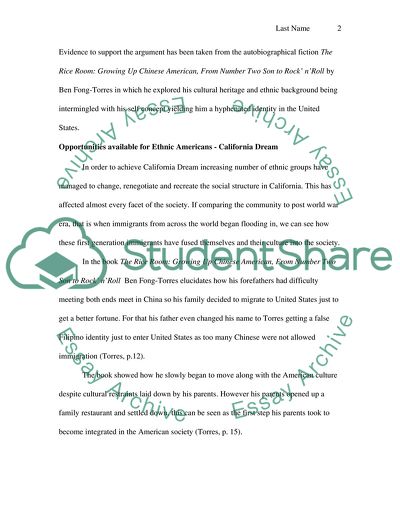Cite this document
(The American Ethnicity Coursework Example | Topics and Well Written Essays - 2250 words, n.d.)
The American Ethnicity Coursework Example | Topics and Well Written Essays - 2250 words. https://studentshare.org/ethics/1738986-based-from-the-novel-of-quiet-odyssey-or-the-novel-of-rice-roomevaluates-the-ability-of-multiple-generations-of-ethnic-americans-realize-california-dream
The American Ethnicity Coursework Example | Topics and Well Written Essays - 2250 words. https://studentshare.org/ethics/1738986-based-from-the-novel-of-quiet-odyssey-or-the-novel-of-rice-roomevaluates-the-ability-of-multiple-generations-of-ethnic-americans-realize-california-dream
(The American Ethnicity Coursework Example | Topics and Well Written Essays - 2250 Words)
The American Ethnicity Coursework Example | Topics and Well Written Essays - 2250 Words. https://studentshare.org/ethics/1738986-based-from-the-novel-of-quiet-odyssey-or-the-novel-of-rice-roomevaluates-the-ability-of-multiple-generations-of-ethnic-americans-realize-california-dream.
The American Ethnicity Coursework Example | Topics and Well Written Essays - 2250 Words. https://studentshare.org/ethics/1738986-based-from-the-novel-of-quiet-odyssey-or-the-novel-of-rice-roomevaluates-the-ability-of-multiple-generations-of-ethnic-americans-realize-california-dream.
“The American Ethnicity Coursework Example | Topics and Well Written Essays - 2250 Words”. https://studentshare.org/ethics/1738986-based-from-the-novel-of-quiet-odyssey-or-the-novel-of-rice-roomevaluates-the-ability-of-multiple-generations-of-ethnic-americans-realize-california-dream.


